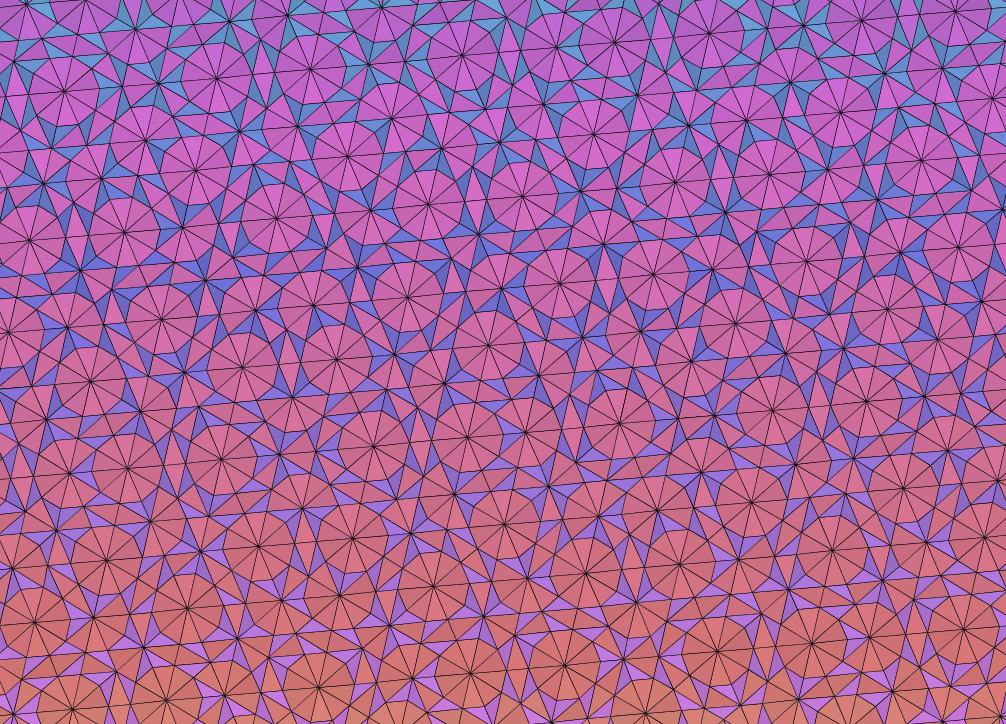A systematic way to generate quasiperiodic tilings of the plane is to take a lattice in higher dimensions and slice it at a funny angle. Greg Egan’s Tübingen applet generates quasiperiodic tilings by projecting selected triangles from an n-dimensional lattice called the An lattice onto a plane. This particular picture comes from the A4 lattice. The applet produces moving pictures that are much more beautiful than this still image, so please check it out!
The An lattice lives in n dimensions, but it’s easiest to describe it in one more dimension, as the set of all (n+1)-tuples of integers (x1,…,xn+1) such that
x1+⋯+xn+1=0.
It’s a fun exercise to show that A2 is a 2-dimensional hexagonal lattice, the sort of lattice you use to pack pennies as densely as possible. Similarly, A3 gives a standard way of packing grapefruit, which is in fact the densest lattice packing of spheres in 3 dimensions. If you were stacking layers of 4-dimensional grapefruit you could use the A4 lattice, though that would not be the densest possible packing.
Let me rapidly sketch how we get from the A4 lattice to the beautiful tiling shown here.
Each point x in the A4 lattice is surrounded by a Voronoi cell, which consists of all points that are closer to x than to any other lattice point. The Voronoi cells of A4 are all identical convex polytopes—can you figure out what this polytope is?
The cells dual to these Voronoi cells are called Delaunay cells. To get the tiling we pick a plane P in 4 dimensions, and whenever P intersects a 2-dimensional face of a Voronoi cell, we project the corresponding 2d face of the corresponding Delaunay cell, which is a triangle, onto P. Then we draw these triangles on the plane!
For more details read:
- Peter Kramer, Dual canonical projections.
- Greg Egan, DeBruijn: mathematical details.
Visual Insight is a place to share striking images that help explain advanced topics in mathematics. I’m always looking for truly beautiful images, so if you know about one, please drop a comment here and let me know!




